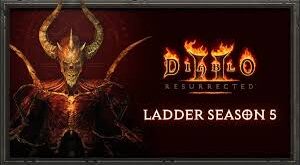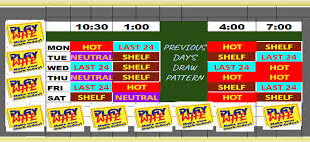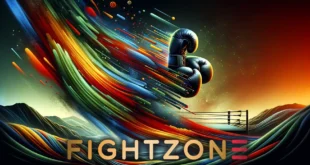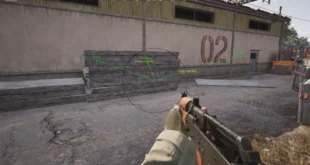Time just never stops. That’s a good thing, of course, because if it ever does it’d pretty much be the end of all existence as we know it. Here’s how messed up time is: the PlayStation 5 actually exists. And not only does it exist, but it’s been out for almost two years. It just had its third Christmas season. Meanwhile from my vantage point it feels like it’s been about six months since the PlayStation 4 came out. Of course it was actually in 2013, which means it served a lengthy seven-year term as Sony’s console of record before the PlayStation 5 came out, with an extra two years (and counting) of relevance tacked on to the end of that. That’s another thing about time: it collapses in on itself as you age. If you’re in high school or college 2013 was forever ago. Once you’re solidly in your adult years everything washes together into one endless, overwhelming now, where moments from 20 years ago can loom larger and fresher in your memory than something from last week. Seriously: time can go get bent.
Typically the PlayStation 4’s days would be rapidly disappearing at this point. Maybe a few big-name multiplatform games would come out on an older system the year after its replacement was released, but the flood would gradually become a trickle, with the newer system squarely having the spotlight, both promotionally and with new game releases, by this holiday season. These aren’t typical times, though. The PS4 had a number of high-profile releases throughout 2022, including the new God of War game. The PlayStation 5 will inevitably take over from the PS4 in full, but who knows how long that will take? There’s still a lot of life left in the PS4, and it’ll be a long time before we will know the final version of this list. Until then, let’s enjoy what we have. If you own a PlayStation 4, here are 50 games that you should probably try out at some point in your life.
50. Inside
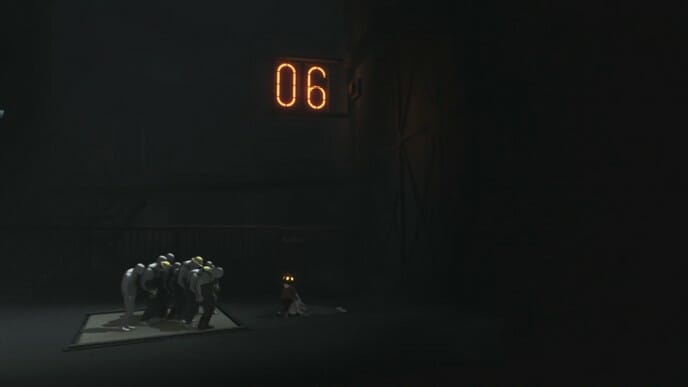
Like Limbo before it, Inside is a dark puzzle game set in a deadly and oppressive world. The boy you control will die suddenly and frequently in violently graphic ways, and the world he explores is almost entirely cast in shadow. Inside is a bit more defined than Limbo, though, replacing that game’s more nature-based fears with Orwellian overtones and a dystopia run by man, and then making your own character complicit in the same kind of mind control that’s ruined his town.—Garrett Martin
49. Oxenfree
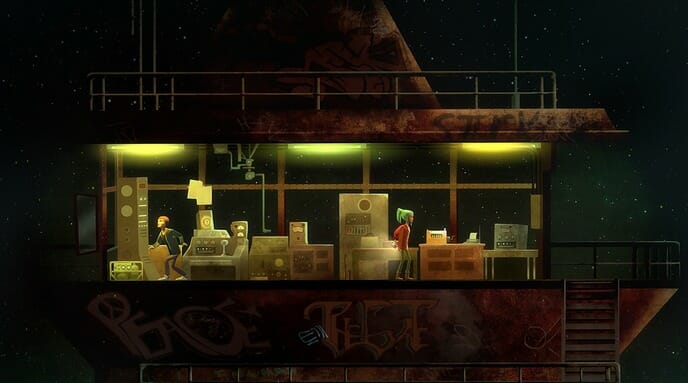
Oxenfree captures the vicissitudes of friendship, especially the heightened passions of teenage friendship. No matter how believable these characters and their relationships can be, though, you might find yourself wanting to get away from them altogether, especially early in the game. Even Alex, the character you control, can occasionally rankle with her petty reactions and annoying humor. In that way, Oxenfree recreates that sense of self-mortification that should be most acute during your teenaged years, and how we’re not always capable of saying what we want to say.—Garrett Martin
48. Fuser
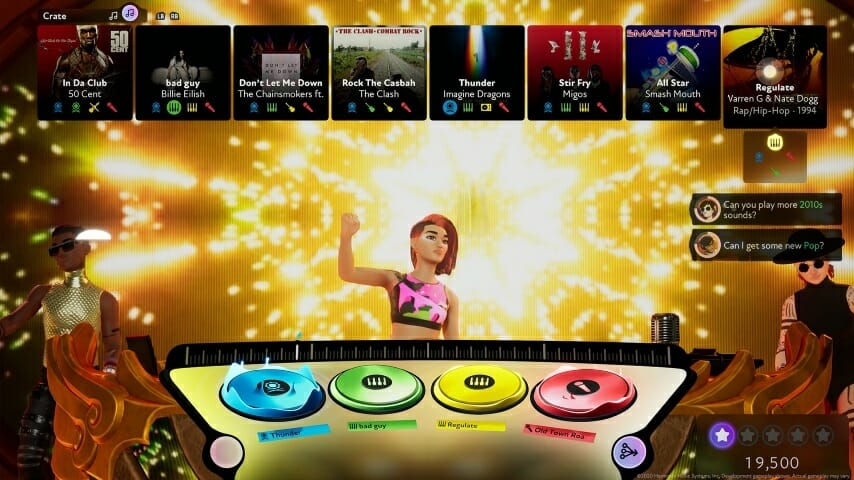
Remember DJ Hero? Cool, now forget all about it. Harmonix’s new DJ game captures the feeling of a real DJ set better than Activision’s short-lived series ever did, and you won’t need a big chunk of plastic that you’ll never use again to play it. Fuser does for DJing what Rock Band did for rocking, with a deep selection of real songs from the past six decades to chop up and recombine however you see fit. It’s a fun game, sure, but it’s also an amazing tool for musical creativity, turning every player into their own personal mash-up machine. You should play it, is what I’m saying.—Garrett Martin
47. Tetris Effect

Tetris Effect is a brilliant and forward-thinking new take on an old and deeply familiar classic. It’s a curious combination of relaxation and extreme stress, often swerving abruptly from one right into the other, and surrounding myself in it through virtual reality and headphones makes it even more powerful and evocative. It could use some more variety in its music, and be a bit more esoteric and surreal with its imagery, but it’s still a gorgeous, sometimes glorious vision, and a true VR stand-out.—Garrett Martin
46. Sekiro: Shadows Die Twice
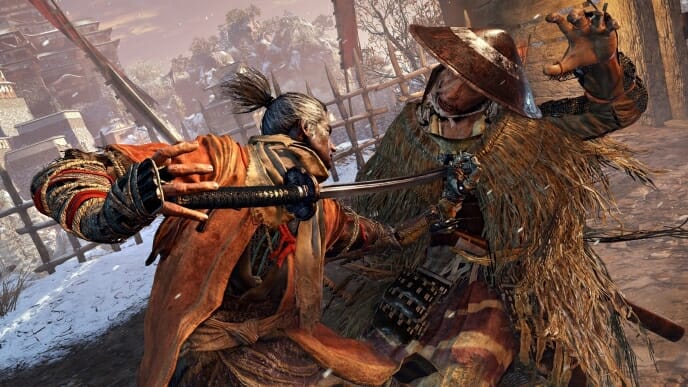
“Fun” is a nebulous, subjective concept that many critics try to avoid, but there’s not a better word that sums up why Sekiro’s repetition never becomes a problem. Sekiro’s tightrope combat—a delicate balance of patience, timing and precision that can swing from stately to furious in an instant—is so physically and intellectually satisfying, and such a consistently evolving challenge, that it never grows old. It retains the same kernel of sheer, unabashed fun that you feel from the first time you get a handle of its defense-oriented, posture-disrupting action, but slowly tweaks it through the steady introduction of new skills and techniques.—Garrett Martin
45. God of War (2018)
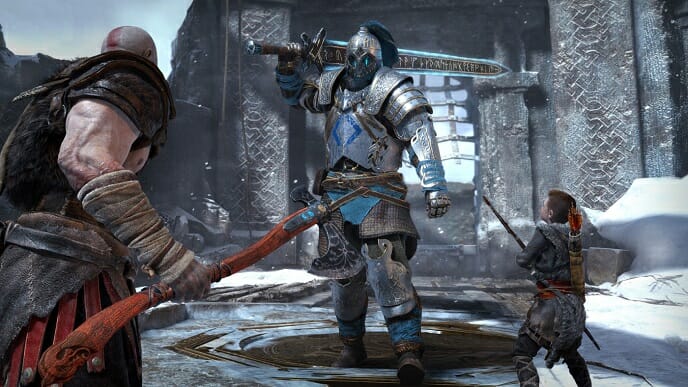
More than most action games, combat in God of War has the pacing of a rhythm game. You have to tap various buttons in the right sequence to strike and block at the right times, unleashing your extra-powerful attacks when needed. When you’re surrounded by enemies and dancing over the various attack buttons, calling in arrows from Atreus while blocking at the exact right moment to stun your enemy, you might find yourself entering a kind of trance where you’re locked so tightly into the rhythms of that combat that everything else momentarily fades away. From the pulse of that violence, to the feeling of that axe chopping through a monster as it flies back to you after a perfectly aimed strike, to the sweeping range of the weapon that’s unlocked later, the combat in God of War is about as satisfying as action games get.—Garrett Martin
44. What Remains of Edith Finch
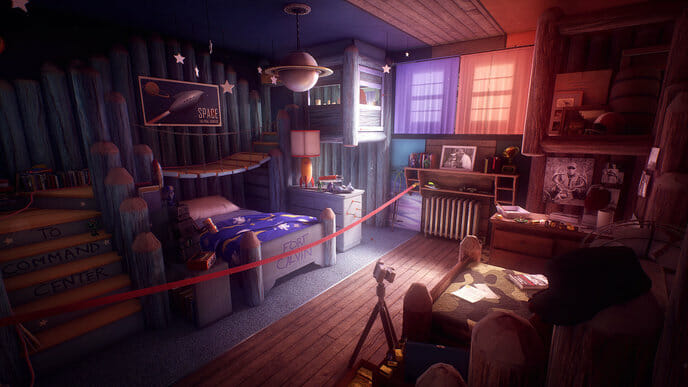
Despite its sometimes too-broad character development and stylistic stumbles, Edith Finch is still a fascinating game—one that has admirably tailor-built its player interactions to fit the varied stories it tells. This is welcome, especially when the inverse approach is so often taken. It’s a game made with real imagination and an honest attempt to capture the unique perspective of its wide range of characters. Given its wide scope, it’s understandable that it’s also a game that succeeds more in concept than execution. Like the subjects of the multi-generational novels whose tradition it embraces, Edith Finch’s individual successes and failures are less important than its overall effect. It’s a story made of stories, and the results of its breadth seem more important than the fine details.—Reid McCarter
43. Ni no Kuni II: Revenant Kingdom
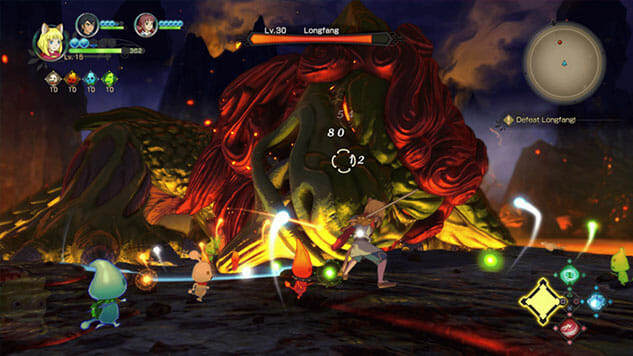
If you pay attention to what we write about here at Paste’s games section you probably realized there was no other feasible option for number one on this list. This is the game, remember, that made me question my lifelong ambivalence towards anime. That’s a massive achievement. Ni no Kuni II is a big leap forward from the middling original for a few reasons, one of which is that it more elegantly unites its gameplay loop with the anime aesthetic of its cut scenes. The camera seamlessly transitions into action when the talking is done and it’s time to take control of your characters, and the new real-time combat scheme also breaks down the off-putting distance found in the first game’s fight scenes. On top of all of that is a surprisingly thoughtful political storyline and characters that are deeper and more human than you might expect from their extremely anime appearances. If you’re remotely interested in role-playing games or anime, you should play this one.—Garrett Martin
42. Hyper Light Drifter
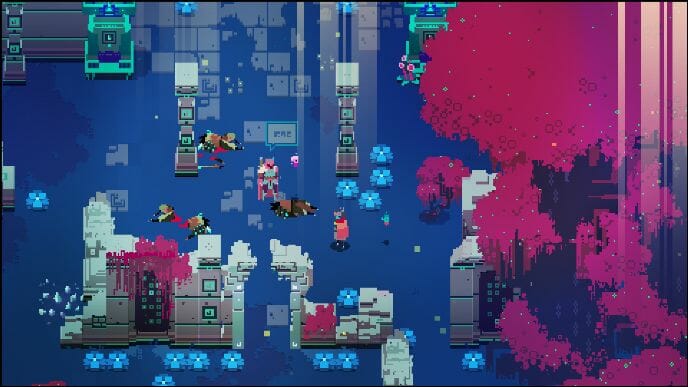
The world of Hyper Light Drifter is a rotting corpse, and the lizard people or bear people or bird people of that world continue to dwell in the ruins of some kind of technologically advanced civilization. You, embodying the player character, are haunted by your own death, and you’re haunted by some kind of force that keeps this world in its state of decay. It is unclear whether progress in the game means finally killing the world or setting it free, and that ambivalence sticks with me even now.—Cameron Kunzelman
41. Horizon Zero Dawn
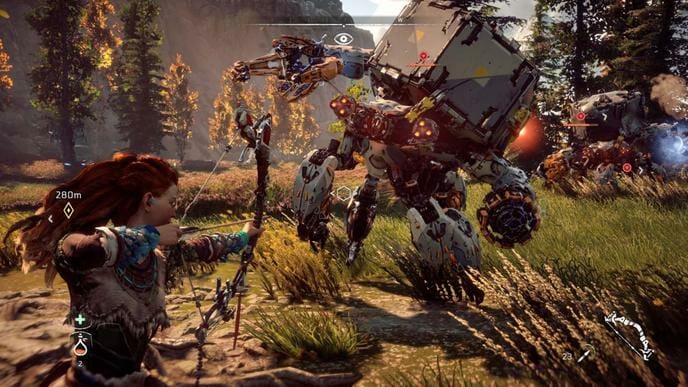
Guerilla Games’ Horizon Zero Dawn looks like a living nature painting. As the player runs or rides from one settlement to another, the landscape constantly shifts between distinct, gorgeously realized biomes. One minute, it’s a frozen tundra, with sun gleaming off enormous white, snow-covered cliffs, and ground covered in scraggly little bushes and errant branches. The next, it’s an orange sanded desert with towering red clay mesas jutting up into a perfectly clear blue sky. In each, birds and foxes, boar and rabbits frolic. (And, because Zero Dawn is science fiction, herds of robotic bulls, flocks of giant metal birds or a lone, lumbering cybernetic tyrannosaur.) The world is genuinely stunning, a place that wants simply to be soaked in—observed and inhabited. It is our planet in miniature. It’s the globe shrunk down and captured in a videogame console. Sweep the in-game camera around a landscape and it’s almost possible to smell the air or feel the warmth of the sun.—Reid McCarter
40. The Last of Us Part II
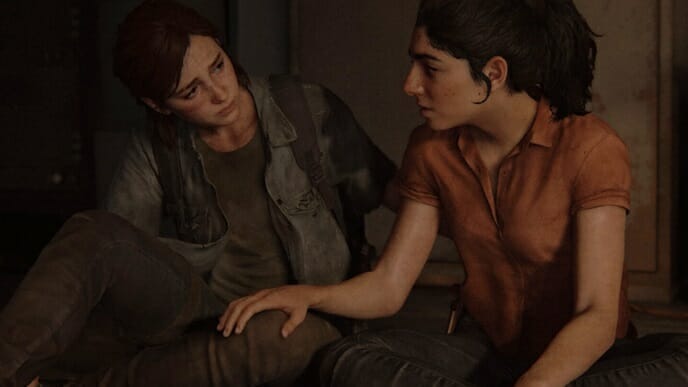
For a game ostensibly about hate, The Last of Us Part II revolves around the complexities of love. It shows love at its most positive, between two people whose love is rarely normalized in media; as the driving force behind a powerful, overwhelming, all-consuming quest of anger, murder and retribution; as a means of defining identity and community, where we belong and where we are dehumanized. It conveys how love — in its equal potential to be merciful and violent — is intrinsically tied with survival.
It’s a story about — among many things — a young woman who screams and breaks and destroys, who is fucked up and has to deal with the painful consequences of ruining things and lives, and having her own ruined in turn. It’s a story about powerless, ruined people who think they can fix themselves by ruining each other. There are no villains, but there are also no heroes, and The Last of Us Part II is intelligent enough to not pretend it can decide who fits in which category.—Natalie Flores
39. Rocket League

Rocket League is the only game I’ve played that’s captured the truly exciting bits of soccer for me. The vast majority of (the admittedly few) sports games I’ve played are so beholden to seasonal statics that I’m just always so bored because I can’t be bothered to keep up with the annual Who’s Who of professional leagues. Rocket League’s touch of zaniness allows it to focus on the bare essentials of the game: there are the players, a ball, and two goals. There are no stat games here. No managing players. No fluff. Just soccer; with turbo-powered RC cars, and it’s all the better and more accessible for that.—Javy Gwaltney
38. Hitman (2016)
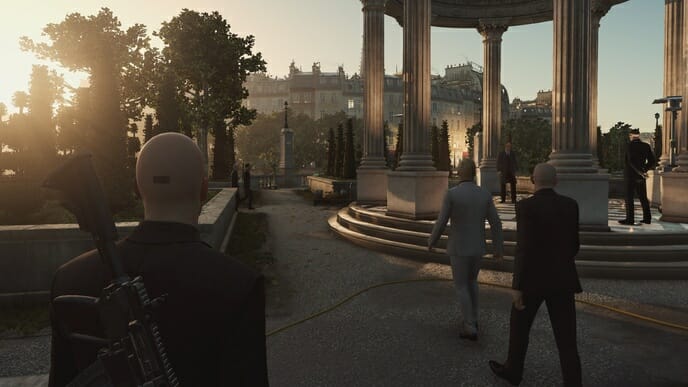
Wander…long enough and you’ll also find interesting sub-plots that key you into new avenues of approach. The best one I found had to do with one woman asking another to infiltrate the same group of people you were trying to in order to save a magazine one of the targets owned. Dangling the prospect of over 200 people losing their jobs over her, the woman convinces her friend to risk her life. She then heads to a nearby bathroom to call her friend as she agonizes over what she’s been asked to do. These stories build that sense of place Hitman’s always been great at creating, and they make you want to continue exploring.—Suriel Vazquez
37. DOOM

The player, a gun, and things to kill. That has always has been DOOM, and id’s legacy has been rekindled with DOOM (2016). You may argue that a good sequel’s job is to iterate on past successes, to further develop mechanics, or to evolve a title to the next step in its life cycle. But DOOM (2016) isn’t a departure or a reimagining. It’s something much better, much more pure. DOOM (2016) is a homecoming. And boy, does it feel good to be home.—Patrick Lindsey
36. Minit
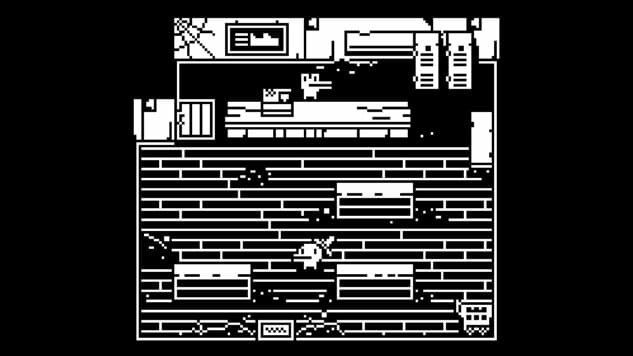
Minit is an adventure with a twist and also a critique of capital split up into tiny bite-sized chunks and told through adorable animals in a sparsely drawn fantasy land. After enough stop and start minutes you’ll realize a factory is running roughshod over this place, polluting the land and working some of its employees to the bone while firing others whose jobs can now be done by machines. Behind it all is a maniacal manager prioritizing productivity over all else. After all these minutes and all these lives the true story reveals itself, and to reach the end you have to collect item after item, life after life, to eventually have the skills necessary to grind the factory to a halt. Even after realizing this it’ll take many minutes and many lives to finish everything you know you need to do, tiny bits of incremental progress in-between passages of rote, mundane, repetitive busy work. If it starts to feel like a job, well, maybe that’s the game’s point. The factory is Minit itself, its employees all of us who play the game, and its dictatorial boss the developers who put us through these paces again and again and again in hopes of the smallest iota of progress. Like the unending and uncaring work shifts that eat up our days until we die, we expend most of our vital energy redoing the same soul-killing nonsense over and over. It is one of the most effective metaphors for the exploitation of the working class seen in videogames. The minutes pass, we experience multiple tiny deaths every day doing the job we’re expected to do. And we press a button, and we do it again.—Garrett Martin
35. Star Wars Jedi: Fallen Order

Fallen Order stacks some of the best parts of Metroid, Dark Souls and Uncharted inside a Star Wars trenchcoat, but that isn’t the smartest thing it does. That would be how it squarely centers on the stress and trauma of its characters. PTSD should be rampant in this universe, considering war is all anybody seems to know, and yet within the Star Wars canon it’s rarely been focused on as keenly or depicted as clearly as it is here. Its lead characters aren’t all that likable, for reasons that are both intentional and unintentional, and that is a flaw; still, they feel a bit more human than what you normally see in games and Star Wars stories, and that, combined with the guaranteed to please gameplay formula, makes Fallen Order a Star Wars highlight.—Garrett Martin
34. Stray

Stray’s first few minutes feel like a revelation. Your cat and a few of its fellow strays strut about some overgrown industrial site, just being cats. There’s no clear motivation, no clear goals, just curiosity and the joy of movement. The promise of an open-ended cat exploration game is palpably exciting. Obviously this game is going to have to become a game, though, so as the tutorial ends your kitty is separated from its clowder, introduced to fearful robots (who are, themselves, strays) who need the help of a (very small, very furry) stranger just like you, and Stray starts to introduce its sad yet hopeful themes. And since a cat will need some way to interact and communicate with the world around it, Stray quickly teams your little buddy up with its own little buddy: B-12, a small drone with a big brain and a bad memory. B-12 is navigator, translator, hacker, weapon, flashlight, and more, all in one—and with a mystery that becomes crucial to Stray’s story.—Garrett Martin
33. Horizon Forbidden West
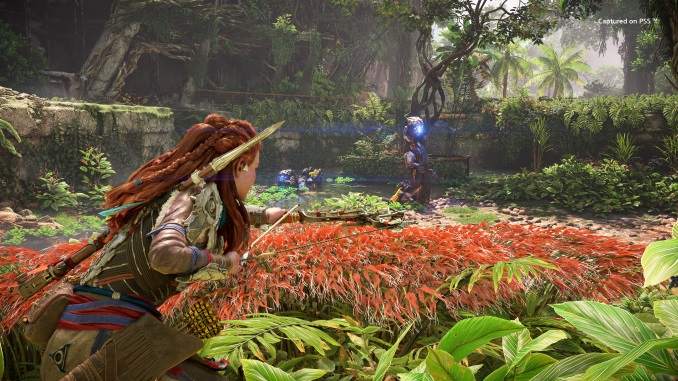
Horizon Forbidden West is that it proves the open world genre doesn’t have to be as creatively bankrupt as it currently is, even while sticking close to the genre’s conventions. With the right focus, the right setting, and the right storytelling, a game can remain in thrall to a familiar format and still feel inspired. It isn’t a game that will surprise you or make you rethink the possibilities of what games can do, but it’s proof that games can still be really fun even if they don’t try anything new, and that’s something we don’t often see from big budget corporate games like this one.—Garrett Martin
32. Death’s Door
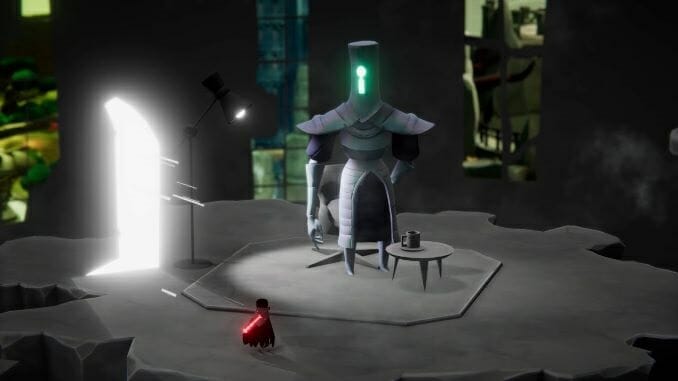
Death’s Door implicitly argues something the entertainment world at large needs to understand: Nostalgia doesn’t have to be shameless or oppressive. It doesn’t have to be the summation of a game’s (or a movie’s, or a TV show’s) ambition. It doesn’t have to be splashed all over the cover and title screen, or the full extent of the marketing campaign. Death’s Door deeply evokes the spirit of some of the most beloved games of all time, and does it well enough that anybody familiar with those legendary games will no doubt recognize and appreciate it. And it does all this with a context and presentation that makes it feel new and vital and not just like a calculated imitation of the past. It takes so much of what made the original Zelda and A Link to the Past into timeless classics, but makes them into their own. Nostalgia can be part of the package, but it shouldn’t be the whole point, and Death’s Door’s cocktail of mechanical nostalgia and narrative creativity is something we don’t see enough of in today’s IP-crazed business.—Garrett Martin
31. Dishonored 2

The most striking thing about Dishonored 2 is its confidence. It creates massive, sprawling levels, with lots of details to discern and small-scale stories to discover, and hardly ever forces you to explore even half of them. You can spend dozens of hours uncovering every secret and trying hard not to kill anybody, or just blitz through, crossbows a-blazin’, in a sprint to the finish line. New scenarios regularly introduce new twists on core mechanics or standard game geometry, and they always feel of a piece with the game’s world and characters. Even when you take the longest path and embrace everything the game has to offer, it never feels repetitive or self-indulgent, and that extra attention to detail fills out what is already one of the more fully realized worlds in games. Add in a strong focus on characters, both new and old, and a multitude of play styles, and you have one of the best action games of the year.—Garrett Martin
30. Celeste
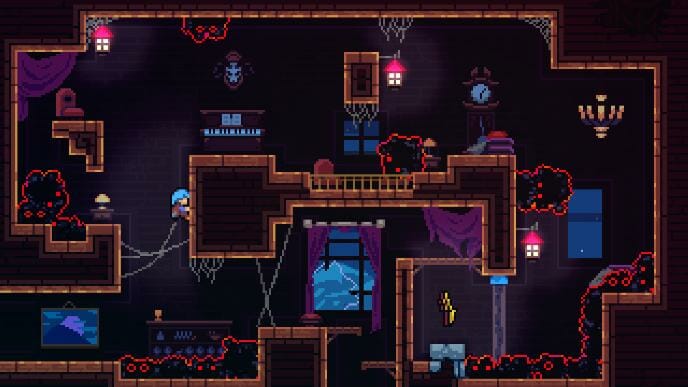
Maddy Thorson’s follow-up to Towerfall employs a familiar aesthetic and language from videogames past to tell a story about mental health and self-actualization, using the mountain the game is named after as a representation of a young woman’s struggles with depression and self-doubt. Celeste is an inspired triumph, with art that recalls the early ‘90s, and requiring a precision to navigate its levels that comes straight out of the heyday of platforming. The vibrant use of color and warm, stylistically varied score elevate the retro aesthetic beyond mere homage. It’s a touching and occasionally insightful depiction of what it’s like to live with anxiety and depression.—Garrett Martin
29. Persona 5
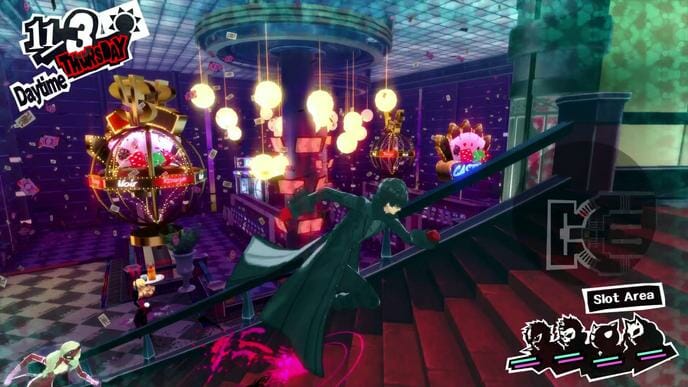
Persona 5 might not be for you—maybe you’ve no love for the anime aesthetic, or maybe the notion of an 80-hour game with no open world isn’t your bag. Maybe you don’t like JRPGs!
But maybe, if you’re anything like me, you’ll spend eighty-three hours with this game over the course of a month and sit there as the credits roll with an empty feeling in your chest, turning your year in Tokyo over and over in your head, thinking of the friends you spent time with and the struggles you endured together. Maybe, despite the unreasonable wealth of games that 2017 has afforded us, you’ll navigate back to the main menu and immediately select “New Game Plus.”—Nate Ewert-Krocker
28. Shenmue III
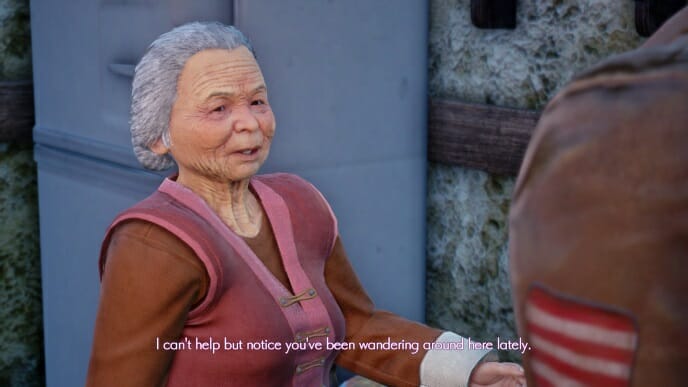
There’s a beauty to Shenmue III that I hope will not go unremarked on. A visual poetry that is simultaneously ungainly and stirring. Walking through the impressionistic fields of soft yellow and pink flowers in Bailu, seeing children practicing martial arts, all under the watchful ancient gaze of tremendous mountain ranges. Each person’s face in Shenmue feels unique (even when it’s not), emotive and full of life (even when gasping like a turtle). The framerate stutters at times, NPCs pop in unexpectedly, but the world feels alive, despite the limitations of budget and technology. It is genuine, honest. Opening a dozen drawers in Shenmue III is clumsy, awkward, and tedious. It showcases the limitations of the textures used, the lack of fluidity—but each trigger of the opening and closing animation is evocative. The emotional honesty of rummaging through a large dresser, which, when was the last time you thought deeply about what rummaging through a dresser even feels like? Shenmue III wants you to sit with those feelings.—Dia Lacina
27. Heaven’s Vault
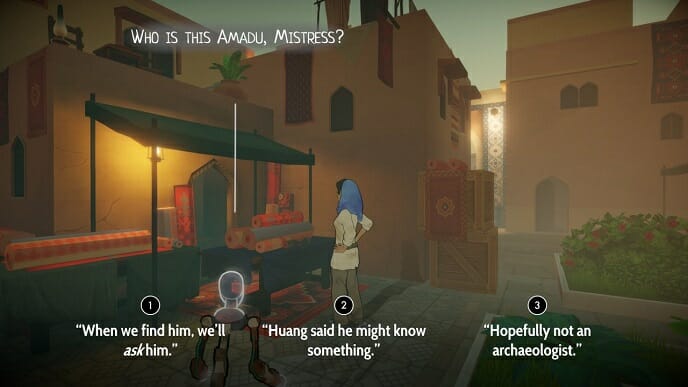
Heaven’s Vault is a sci-fi adventure starring a young historian named Aliya, who must travel around the galaxy to solve a mystery surrounding the disappearance of a professor on her adopted planet. In order to find him, Aliya has to translate the writing etched into artifacts she finds on various moons and at dig sites, each providing a piece of the linguistic puzzle that will unlock more clues to an emerging mystery. It is equal parts history and detective work, highlighted by a reverse engineering process that gives a surprisingly insightful look into the work that actual archaeologists do to decipher languages. As Aliya encounters new inscriptions, she must use everything from root words and context clues to good old fashioned process of elimination to figure out what they mean. Untranslated phrases are broken down into glyphs, which can be filled in based on those that are already known, or by those you can guess the meaning of based on how they relate to other glyphs. It reminds me, somewhat, of the ongoing efforts to translate Etruscan, a language mostly known from tombstones and ossuaries. Heaven’s Vault illustrates the creativity and intellectual flexibility needed to fill in the blanks when translating a language with almost no text examples. It almost makes you feel like a real archaeologist.—Holly Green
26. Spelunky 2
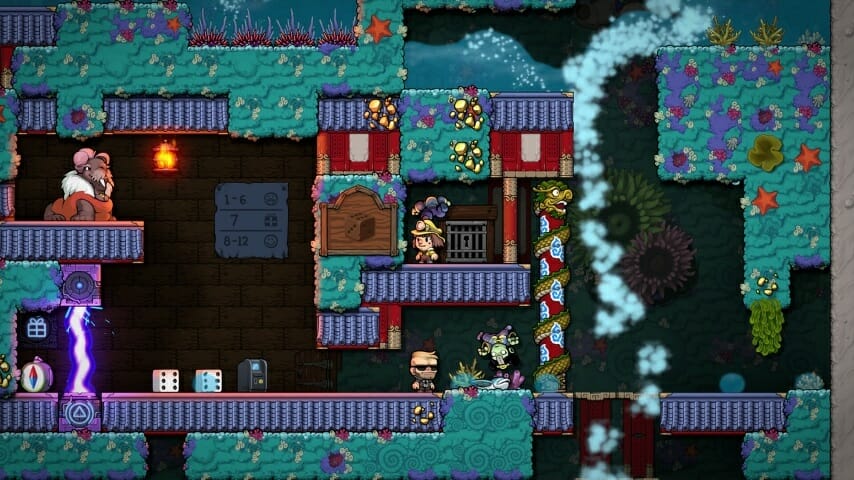
With most videogame sequels you expect the three “-ers”: bigger, badder and better. At least that’s what the standard marketing boilerplate drones on about at every E3 press conference. Spelunky 2 can scratch off that “bigger” tag, at least—it has more worlds than the first game, although its branching structure makes sure that you don’t see them all during a single playthrough. There are multiple tweaks throughout that marks this as its own unique game, and yet despite those changes the ultimate experience perfectly recaptures how it feels to play Spelunky. It’s less a sequel than a continuation, or some parallel dimension’s version of what Spelunky has always been.
The genius of Spelunky 2 is that it somehow adds new possibilities to a game that already had endless possibilities. That’s legitimately impressive. And that’s why I’m sure I’ll be playing this for as long as I’ve played the original, both games coexisting blissfully together as one of the absolute best parent-child pairs in gaming.—Garrett Martin
25. Firewatch
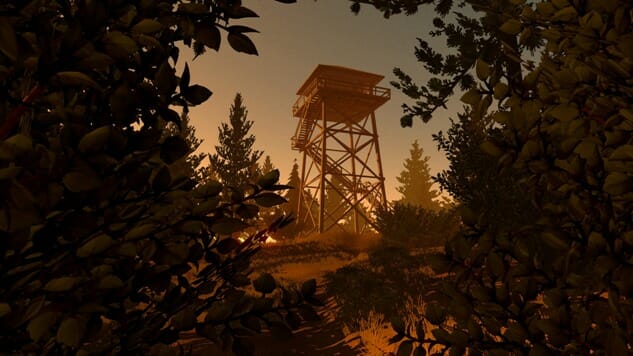
Firewatch is a game, but it’s not useful to write about it as a game. Who cares what your fingers do while you’re playing this? Yes: it has graphics. The stuff that matters is what Henry and Delilah talk about on their radios. It’s what Henry reads throughout the few campsites and outposts he comes across. It’s what you feel as the story unfolds like a short story on your television screen, visiting the private grief of others who can struggle to communicate just as torturously as all of us in the real world can. And although this dual character study can feel a little slight, and has a few improbable notes that are struck seemingly just to enhance a sense of mystery, that central friendship between Henry and Delilah is powerful. It feels real, and important for both of them.—Garrett Martin
24. Gone Home: Console Edition

Will Wright once said, “games are not the right medium to tell stories; videogames are more about story possibilities.” Gone Home challenges such notions, not only by telling a wonderful story but by setting players free in the game world and trusting them to uncover it. By refusing to tell us what to do in the game, it communicates a self-confidence that most games lack. The result is an unforgettable story that’s intensely personal but universally powerful. To play Gone Home is to grow deeply invested in the lives of a family we’ll never know but in which we can all see different aspects of our own families and our own selves.—Drew Dixon
23. Yakuza 6

What makes Yakuza 6 so compelling is that it succeeds in making the insignificant seem significant. It focuses on the minutiae of the world, from the detailed shop interiors that serve no purpose other than to ground you in the setting, to the nearby citizens who go about their daily business as anarchy unfolds around them in your wake. But perhaps the greatest feat of all is that the game trusts you, the player, to find it all yourself. By refusing to hold your hand and lead you from A to B, it gives you room to explore, to procrastinate and breathe between story steps, and it’s in those moments of respite that you’ll find the best of what the Yakuza series has to offer.—Andy Moore
22. Night in the Woods
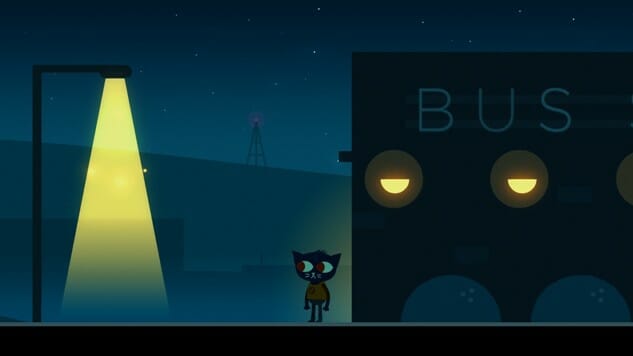
The genius of Night in the Woods is that it grounds its heavy themes not in the worn down characters of Raymond Carver, but in the queer anarchist punks of its lead character’s generation. The game is a rare look at characters who balance all of the burdens above with a love for retro videogames and band practice and drinking in the woods while some blowhard from high school plays acoustic guitar. The game borrows tonally from a variety of sources—everything from the hyperkinetic Scott Pilgrim to the peculiar horror of Haruki Murakami or Blue Velvet back to the blue collar sob stories of Breece D’J Pancake. Plus, did I mention all the characters are animals? Like BoJack Horseman, this aesthetic allows the game to fluctuate rapidly between over-the-top absurdity and soul crushing sadness.—Salvatore Pane
21. Fallout 4
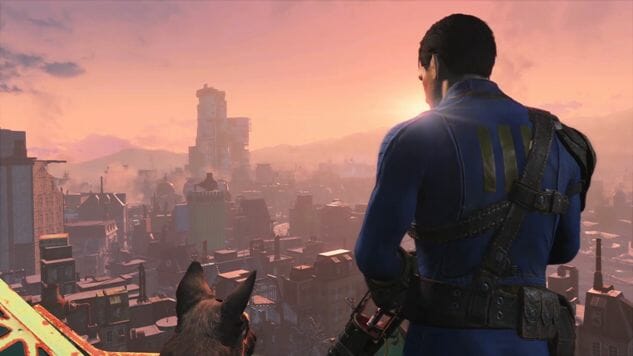
It’s amazing that something with Fallout 4’s scope and magnitude remains as bewitching as this game does. Bethesda’s formula is overly familiar by this point, but from a story perspective these games exploit the freedom afforded by the medium more than almost any other notable examples. Fallout 4 is built on mystery and discovery. We can charge through the main storyline as quickly as we’d like, but the true power of this game comes from exploring at our own pace, uncovering its secrets in no certain order and at no set time.—Garrett Martin
20. Cuphead
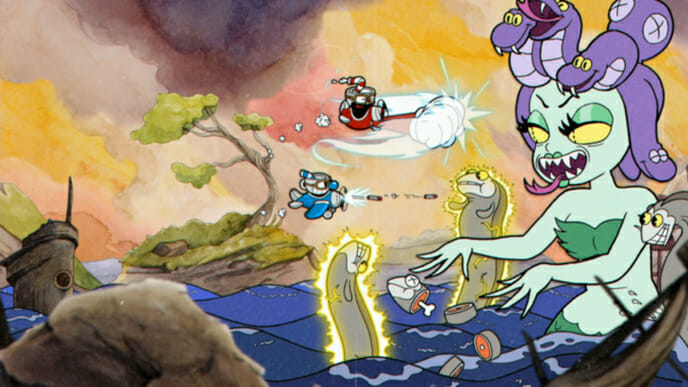
Can you call something “frustrating” if you’re actively enjoying it all the way through? You will repeat yourself a lot in Cuphead, a brutally hard game built around old-school arcade-style boss fights and platforming. A major reason the constant restarting doesn’t grow old is the beautiful presentation, with an art style patterned after early 1930s hand-drawn animation and an original score of big band and ragtime music. As difficult as it is, though, the game rarely feels capricious. You’ll usually understand what you have to do, and the struggle is just being able to pull it off. As frustrating as it can be to fight the same enemy two dozen times before finally winning, it only makes the satisfaction of pulling it off that much more powerful.—Garrett Martin
19. Titanfall 2
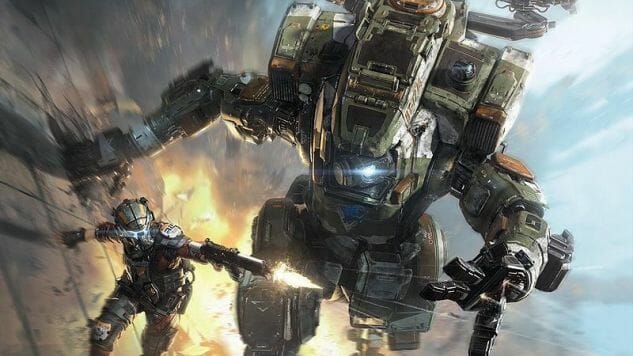
I have a healthy respect for aimless, open-ended games that let us play and explore at our own pace. They often don’t feel wasteful, no matter how many hours one can pour into them. What does feel wasteful are tightly scripted and guided games that drag on for hours and hours, pumping out new battlefields and bad guys to plow through between cutscenes well past the ten hour mark. Titanfall 2 cuts out all the extraneous business that can plague modern day action games, resulting in one of the tightest, tautest, tensest first-person shooters in recent memory, with a solid helping of mind-bending mechanical tomfoolery on the side. Like The Last Guardian, a game that otherwise could not be any more different than this one, at the core is a touching, heartfelt relationship between man and (techno)beast that trounces most of the human relationships found in games. Titanfall 2 is a laser beam with a heart.—Garrett Martin
18. Bloodborne

Bloodborne is a distillation of everything that worked in Demon’s Souls and Dark Souls. The combat is fast, less clunky and more risky. Yharnam is a stunning world worthy of hours of exploration, and, perhaps most pleasant of all, Bloodborne is a game that knows when to end. It’s a deeply challenging game set in a fantastically realized gothic nightmare, an adventure of the highest quality for those willing to undergo the game’s trial by fire.—Javy Gwaltney
17. The Witcher 3: Wild Hunt
When I think of my time in Witcher 3, I think mainly of the quest for Ciri, your adoptive daughter. I think of mages with freckles and villagers working fields after you drive away their tormenters. I think of it as a game which says that all we have is each other, as family and friends. As people, whose lives are short but brilliant. As a game that says that what makes life worth living and struggling for isn’t trying for perfection but our common imperfections. It’s aspiration by way of mundanity and I don’t know that I’ve played anything quite like it.—Ian Williams
16. Tony Hawk’s Pro Skater 1 + 2
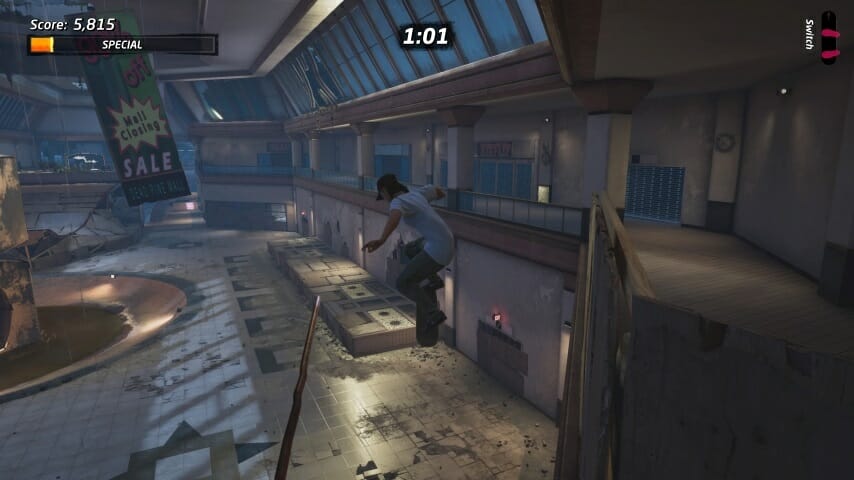
Tony Hawk’s Pro Skater 1 + 2 remasters the first two games in the iconic series, updating all the levels from the original games and featuring both the original skaters and new ones. If you’ve been hoping a skating game could recapture the look and feel of those old classics, well, here you go. When I picked up the controller it was like no time had passed. I haven’t played the warehouse level from the very first game in literally decades, and yet it all came back to me immediately once I put thumb to stick.
Tony Hawk’s Pro Skater 1 + 2 isn’t mere nostalgia. It’s a revival. It exhumes a true classic but roots it deeply in the modern world and not in some idealized version of its past. It doesn’t try to hide or ignore the changes of the last 20 years. And that’s one reason it’s one of the best games of 2020.—Garrett Martin
15. Final Fantasy VII Remake
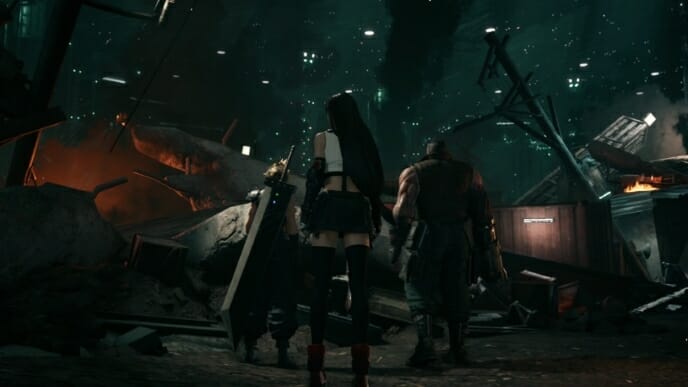
Square Enix pulled off an impossible trick here. They not only remade one of the most beloved games of all time in a way that thoughtfully built and expanded on the original; they somehow turned what was about five hours of story in 1997 into a 50-hour game without it ever feeling all that padded out. Remake preserves the strong political consciousness of the original game while greatly fleshing out many of its secondary and background characters, giving it all a greater emotional resonance than it had back in the day. This game has something to say but remembers to keep the focus on characters and their relationships, preventing it from ever becoming too preachy. It’s not subtle, at all, but it’s more subtle than the original, or what you would typically expect from a JRPG, and that’s one of the reasons it’s our favorite game of the month.—Garrett Martin
14. The Pathless
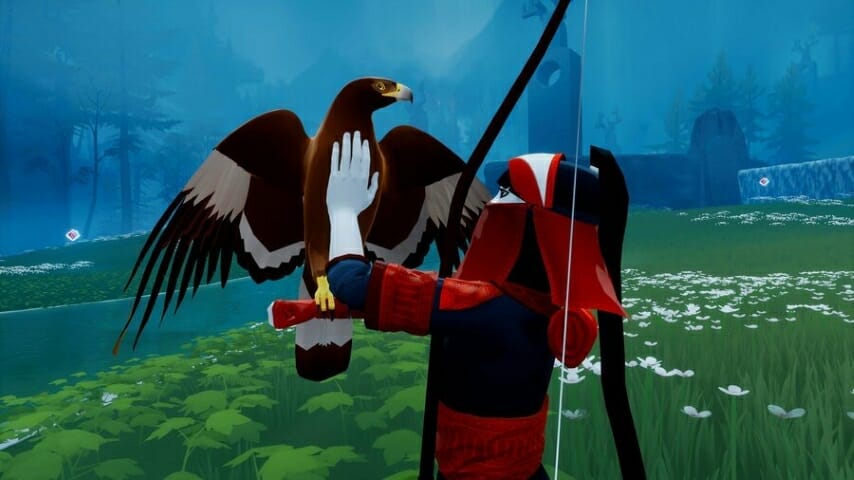
Games should have secrets. They should feel like worlds that exist outside of the game and your presence in it, like something you’ve surreptitiously trespassed upon, and that, at best, are ambivalent towards your existence. The Pathless creates that feeling as well as Breath of the Wild, Demon’s Souls, or any of Team Ico’s games. This mythic adventure is set in a land on the cusp of apocalypse, in a battle between a benevolent god and a self-proclaimed godslayer, and trusts you and your eagle companion to sift through the ashes of its civilization to find a way to save it. There’s no violence outside of boss battles, and no threat of death to worry about. It’s built on movement and exploration, with your character slicing through the countryside as quickly as possible, or gliding through the air as your eagle carries you, while searching through decaying temples and fortresses for the tools you need to beat back Armageddon. If there’s anything to criticize about The Pathless, it’s that it’s maybe a little too linear—a little too similar to an Ubisoft game, moving from tower to tower to unlock the next step in the story. That doesn’t lessen its impact, though, or its beauty. This is one of the best games of the year.—Garrett Martin
13. Spider-Man / Spider-Man: Miles Morales
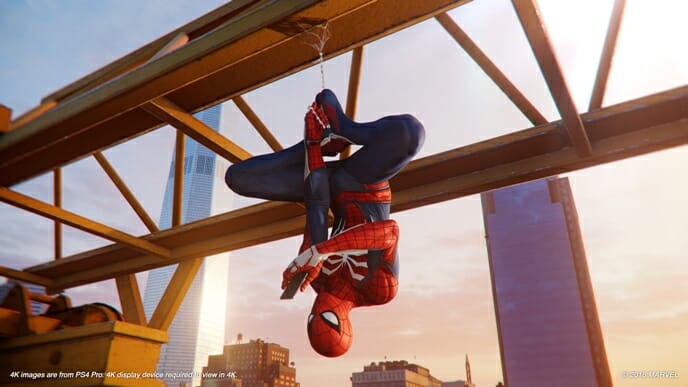
Spider-Man might return to too many wells too many times—it might be too stuffed full of fights and collectibles and typical open-world business—but its foundations are so strong that it never threatens to collapse on itself. This game understands why Spider-Man has been perhaps the most popular superhero of the last half-century, and does about as good of a job as the comics or movies at capturing the character’s essence. It blends more than fifty years of Spider history together, molds it around a thrilling recreation of Spider-Man’s trademark motion and fighting styles, and puts you in control of the whole thing. All together that makes this one of the most mechanically, narratively, and nostalgically satisfying big budget games of its year, and the best Spider-Man game yet—at least until the 2020 spin-off Spider-Man: Miles Morales, which outswings the original.—Garrett Martin
12. The Last Guardian
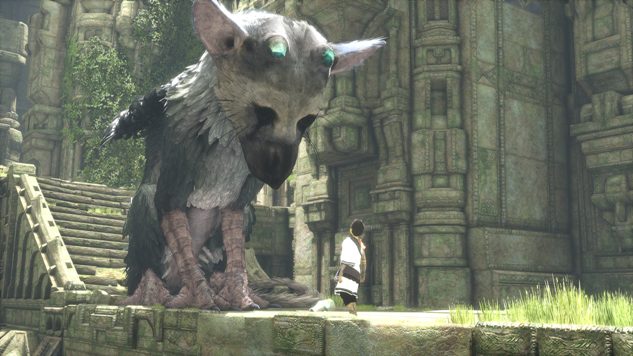
The rumors are true: The Last Guardian is a poignant reminder of our dependence upon nature and other species. Yes, Trico feels like a real animal. He can be stubborn and unruly and I could barely play this game at first due to how much he reminded me of my departed dog. The connection I felt to him barely an hour in was about as powerful as games get, though. Like other games on this list The Last Guardian depends on patience and a natural inquisitiveness, on a player who doesn’t mind cracking puzzles with minimal guidance and a partner who isn’t always perfectly attentive, and it’s all the stronger for it.—Garrett Martin
11. A Plague Tale: Innocence
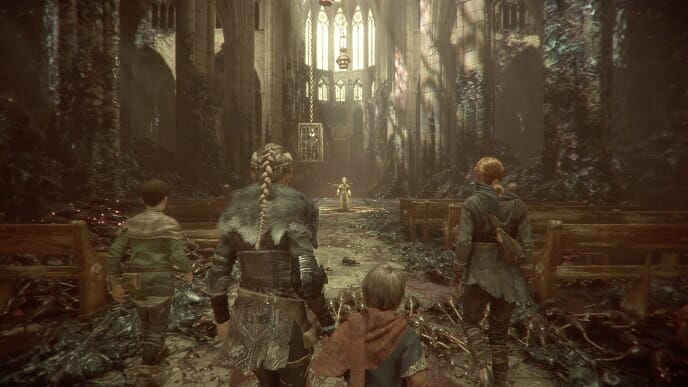
This subtle, believable approach to characterization reinforces that A Plague Tale is an unusually patient and confident game. It lets its story unfold slowly, avoiding the urge to dole out increasingly elaborate set pieces with a predictable regularity. It never lets its pacing or sure-handed command of character become subservient to plot or the need for action or difficulty that’s assumed of videogames. Sometimes the notes a publisher sends game developers can be felt while playing a game—there’ll be too many action sequences, or ones that drag on for too long, or stories will feel truncated, as if a crucial plot point or bit of character development was cut out to make things move faster. That never happens with A Plague Tale, which maintains a consistent vision and pursues it at its own pace.—Garrett Martin
10. Psychonauts 2

Psychonauts 2 feels like a game made by real people who care about real people. Many games have come down the pike the last several years with a focus on the psychological state of its characters, and thus its players, but too often they lack any tact or any legitimate insight into how people think and feel. They use sorrow and violence as shortcuts, relying on cheap scares and easy provocation. It’s like they’re made by machines, or the board room, or some algorithm that slightly rearranges previous AAA hits into something that’s supposedly new. Too many of these games fall into that witless trap of thinking something “serious” and “important” must also be humorless and dark, unrelentingly grim and fatalistic. Psychonauts 2 reveals that for the nonsense that it is, showing that you can more powerfully and realistically depict emotion when you use warmth, humor, humanity—the whole scope of emotions that make us who we are. Psychonauts 2 asks “how does it feel to feel?”, and then shows the answer to us—and the games industry at large—in brilliant colors.—Garrett Martin
9. No Man’s Sky

Has there ever been a better game to get lost in? No Man’s Sky is aesthetically impeccable, from its psychedelic landscapes pulled straight from Yes album covers, to its krautrock-by-way-of-Friday Night Lights score. It’s easily the best screenshot machine in recent memory. It doesn’t reward the player’s patience and diligence as much as depend on them, which makes it as brave as it is respectful. A game that’s fundamentally hopeless, that’s fixated on the vast emptiness of the universe around us, somehow instills hope in us solely through its undeniable beauty. And 2018’s Next update gave us even more to do in this massive universe, and people to do it with.—Garrett Martin
8. Outer Wilds

It’d be easy to make Outer Wilds sound like a mash-up of familiar influences. It’s built around a recurring time loop like Majora’s Mask; you’ll fly from planet to planet in real time in search of ancient secrets, as in No Man’s Sky; you’ll explore a variety of eldritch mysteries baked into this solar system, not unlike a new-fangled Myst. Those ideas are implemented in such a unique and seamless way, though, that the total package feels unlike anything I’ve ever played before. It focuses on a race of gentle spacefarers who build rockets out of wood in order to map the other planets that circle their sun and dig up answers on ancient settlers who left wisdom spread throughout the galaxy. The developers have clearly thought long and hard about the alien universe they’ve created, from the specific nature of its physical laws, to the culture of the creatures who populate it. The result is a game that feels appropriately alien, strengthening our desire to unlock its mysteries and explore its culture.—Garrett Martin
7. Nier: Automata
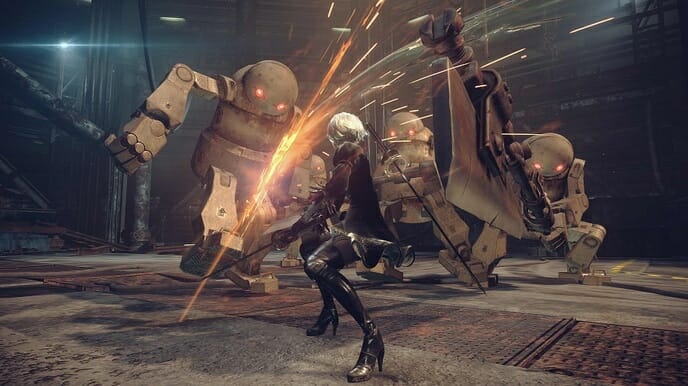
Nier: Automata is a mature, sophisticated game that avoids the JRPG trap of the narrative, the themes and the play being separate entities. Platinum and Yoko Taro are an expert pair here, harmoniously bringing together dozens of eclectic sources from philosophy to anime to history to real-life war to silly, over-the-top fight sequences into one cohesive whole where not a single part feels unnecessary, and all contribute to the larger message. It is a timely story about our priorities as a society and our continued relevance in an increasingly automated world, told in a clever way that makes meaning out of about four different genres worth of mechanics and yet could still be called elegant. It’s a sharp commentary that could only be done through games, and for now, it is easily the magnum opus of either of its authors.—Michelle Ehrhardt
6. Control
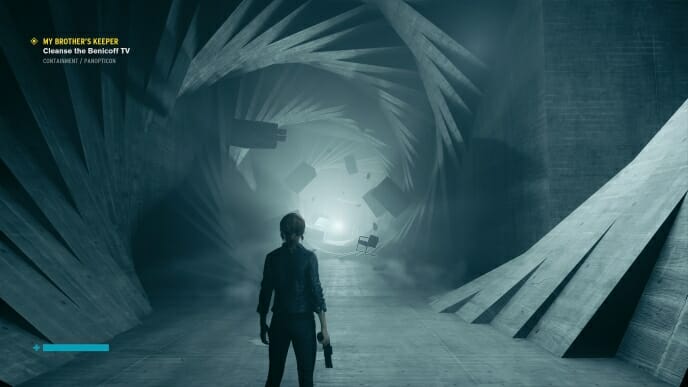
Remedy has worked hard to unite the mysterious and the mundane since at least Alan Wake, and Control is an almost ideal distillation of that theme. At its heart is the bureaucratic exploration of the unknown and unknowable, with the player stepping into the role of the new director of a government organization devoted to classifying and controlling unexplained phenomena. It’s an enigmatic and unpredictable quest not just into a nondescript office building that grows increasingly contorted and abstract, but into the heart of a conspiracy that spans the paranormal and the prosaic, and one that ultimately seems to have little use or concern for either the player or their character. In its depiction of humanity grasping for relevance and understanding in an indifferent and impossible to understand universe we see a clear reflection of our own existence. It’s a game of uncommon wisdom and depth, and one that needs to be played.—Garrett Martin
5. Elden Ring
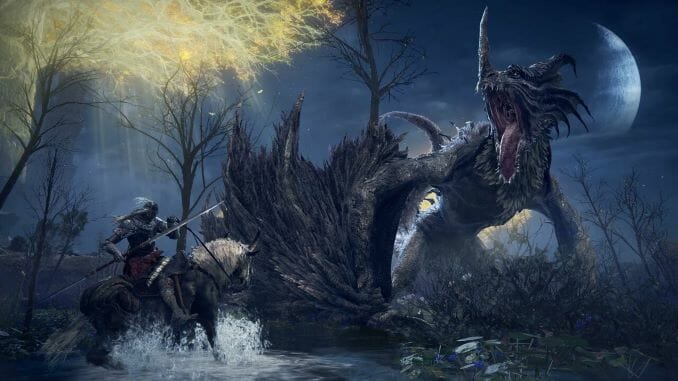
Platforms: PlayStation 5, Xbox Series X|S, PC, PlayStation 4, Xbox One
Elden Ring borrows—grafts, really—elements from all of of From’s Souls games together. But it’s Bloodborne that’s really the reason for this game being the open world that it is. In Chalice Dungeons we saw a purity of form that the Soulsborne micro genre was poised to capitalize on, but couldn’t quite deliver. Procedural dungeons accessed from a menu. A place where minibosses and remixes of bosses would flourish, where the skill of dungeon-delving players could be tested and rewarded repeatedly. Not necessarily a haven for more lore, but for the most stalwart of players there would be deep thematic resonance at the end. But really, sick dungeons for the sake of sick dungeons.
Elden Ring says “what if we took the lessons we learned from Chalice Dungeons…and that was the game.” An open world, after all, is only as good as the dark holes that perforate its beautiful surface, the land is only as interesting as its scars.
And these dungeons, especially the big ones, are compelling like no other. This is the apotheosis in this work—the exaltation of the dungeon designer.—Dia Lacina
4. Norco
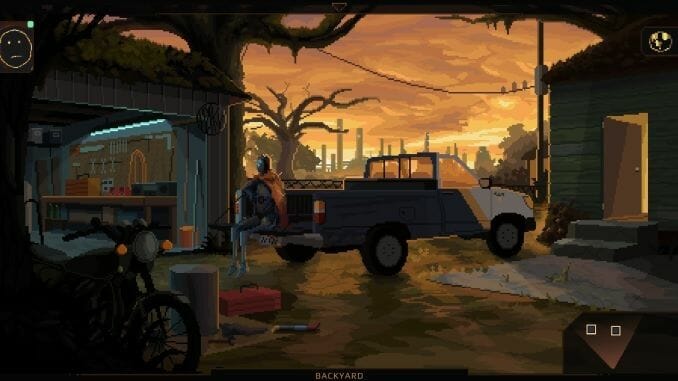
As a Southerner I don’t really trust anybody to write about the South unless they, too, are from here—or at least have lived here long enough to truly understand what makes it great and awful in equal measure, and how the ways in which the South is actually fucked up often diverge from the ways in which outsiders think it’s fucked up. Norco, a smart narrative-driven game about the unique ways in which institutions like religion and big business have exploited the South, its people and its land throughout history, is clearly the work of people who understand this region and its fundamental defects. It’s an unflinching, occasionally surreal glimpse into an only slightly exaggerated version of Louisiana, with its mythical and allegorical flourishes only highlighting the aimless mundanity and real-life degradations of the modern South. If you only play one game from this list, make it Norco.—Garrett Martin
3. Kentucky Route Zero: TV Edition
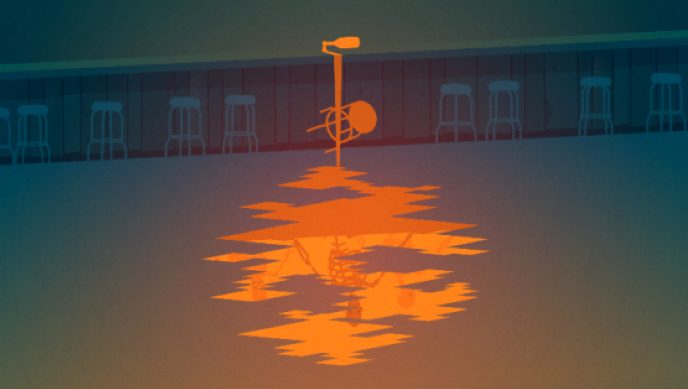
Cardboard Computer’s exploration into the mysteries of the mundane finally came to an end in early 2020, making its PlayStation 4 debut at the same time. This magical realist adventure combines the mythological folkways of “old weird America”—here personified by a stretch of rural Kentucky that regularly phases between the familiar and unearthly—with a pointed critique of how capitalism reduces everybody to interchangeable commodities. Workers grind themselves to bones to pay off their “debt” to their employers, pharmaceutical companies basically own the doctors who prescribe their medicine, and an amiable truck driver gets lost on a routine delivery with no end in sight. It’s a beautiful bit of inspired genius, as good on the PS4 as it was on PC.—Garrett Martin
2. Hades
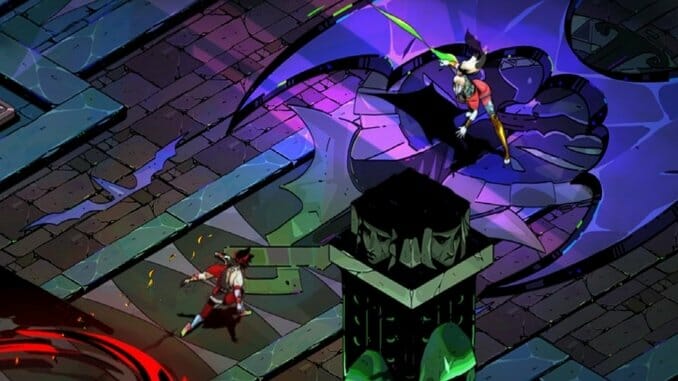
What makes Hades so great—and what elevates it above other roguelikes—is how it creates a consistent sense of progress even as you keep dying and restarting. Part of that is mechanical—although you lose all the boons bestowed upon you by the Greek gods after a run ends, along with other power-ups acquired during your journeys through the underworld, there are a few things you do hang on to when you return to the game’s hub world. More important than that, though, is how the game’s narrative unfolds between runs, driving you to keep playing through whatever frustration you might feel in hopes of learning more about the game’s story and characters.
Between every run in Hades your character, Zagreus, returns to his home—the palace of his father, Hades, the God of the Dead. Yep, he’s another rich kid who feels his first bit of angst and immediately starts slumming it. Here you can interact with various characters, upgrade the decor, unlock new permanent perks, and practice with the game’s small arsenal of weapons. Every time you return the characters who live here have new things to say, slowly unraveling their own storylines and deepening their relationships with Zagreus. And given that the writing in Hades is as consistently sharp and human as it’s been in all of Supergiant’s games, getting to talk to these characters alone is a reason to actually look forward to dying in this game.—Garrett Martin
1. Thumper
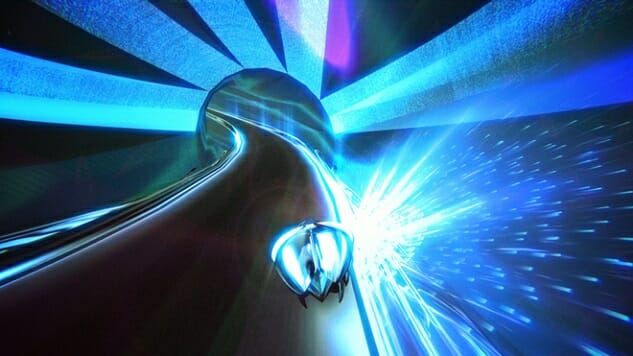
Thumper’s difficulty is suffocating. Along with the oppressive music and the stark graphics, it turns the game into a claustrophobic, stressful, frightening experience. It rattles around inside my brain when I’m not playing it, its velocity and brutality careening throughout as I try to unwind after playing. Thumper taps into art’s ability to alter our consciousness, introducing a new reality for us to get lost in, and it’s not afraid to let this dream world look and feel like a nightmare. Most rhythm games want to replicate the best time you could possibly have at a rave; Thumper wants you to feel like you’re shaking on the floor of a bathroom stall, praying for those weird shapes and sounds that surround you to go away. It is an essentially perfect realization of its own unique goals and concerns, and a game we’ll be playing and celebrating for decades.—Garrett Martin
 Lifeyet News Lifeyet News
Lifeyet News Lifeyet News


